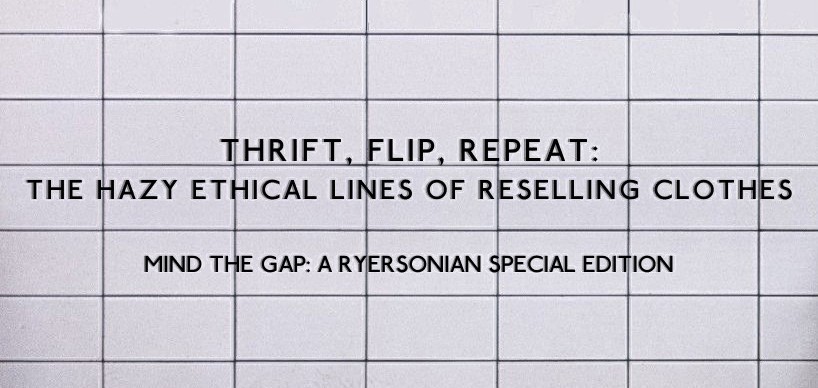There’s a lot more than just lint lining some pockets

For those living in urban areas, or even just regular social media users, the rise in reselling thrifted clothing has been impossible to ignore.
“For every hard-core thrifter who delights in the thrill of the hunt and relishes the score of the perfect vintage outfit purchased for pocket change, there is another segment of shoppers that are hunting through the racks, scouring for a different type of score,” says Remake, a non-profit whose goal is to end fast fashion.
“For these shoppers, the goal isn’t about finding unique pieces to mold their own fashion identity. Instead, their delight of the hunt is linked to the possibility of future financial gain.”
People finding clothes at thrift stores to sell at a higher price has contributed to what some have called “resale culture.” This has led to multi-platform discussions about the ethics of resale from both sides online, especially on sites like TikTok and Instagram.
Despite the discussion being generated online, there seem to be no concrete answers about the ethics of thrifting and reselling.
Resellers have been criticized online for taking items away from those in need of cheap, quality clothing. “It’s hard going to the thrift to find clothes to wear and all the quality clothing is taken and being sold online for 10x the price,” says Twitter user @Hiitscarissa.
Since Instagram has become more sales-friendly, some have even accused the platform of becoming “an online flea market.”
The reality is, not every clothing item donated will end up on someone’s back. Fashionista reported that 11 per cent of donations to Goodwill are deemed unfit for sale. Only 20 per cent of total donations to thrift stores in the U.S. are sold to consumers, with the other 80 per cent either end up in a landfill or are sent to developing and low-income countries by the United States, according to NPR.
As BBC noted, this takes revenue away from local textile makers. Used clothing has gained “a significant market share” across sub-Saharan Africa since the ’80s and ’90s. Since then, Ghana’s textile and clothing employment has been slashed by 80 per cent.
While these statistics show that North American thrift stores conduct rigorous quality checks before placing products for sale, they don’t account for the resellers that buy name brand items to resell at astronomically higher prices. This is directly linked to the issue of gentrification within thrifting, as thrift store prices have risen over the last decade.
Racked says factors like inflation and rising rent costs contribute to these numbers, and links the rise of vintage resale storefronts to gentrified areas. Thrift stores are aware of the rise in popularity of resale, according to Remake, and may raise their prices accordingly. The question that remains is: where do families go to buy name brand, quality items when there are no affordable suppliers?
That’s not to say every reseller is playing the game solely for capital. Fourth-year Ryerson business and marketing major Elizabeth Lawless is the owner of Thrifted by Lib, an ethics-based curated Instagram shop that recently launched its official website.
It also expanded into consignment in a continued effort to source clothing sustainably, since, according to Vogue, “Consigning one pair of jeans conserves 279 litres of water.” When Lawless chooses items to sell in her shop, her focus is style and quality over the resale value of any specific brand.
“This is something I’ve always done,” says Lawless. “I find that when you focus on the style of an item rather than a brand, you will likely wear it more often.”
She also argues that curation is a service itself, and that some people don’t have the time to sort through thousands of items, especially if they find the thrift store environment overwhelming.
Though Lawless says Thrifted by Lib is responsible for most of her income, she sees her business as a passion project, with the main benefit being boosts to her mental health and self-confidence. Many thrifters on TikTok, deemed Thrifttok by over 98 million viewers, have noted the same benefits. According to Bustle, while people have used TikTok to talk about how thrifting helps with their well-being, it has also provided a platform for discourse on the ethics of reselling.
While the resale debate is in full force online, some have offered tips to resellers on how to operate more sustainably. The Imperfect Idealist suggests shopping and offering consignment is a step in the right direction, in addition to resellers avoiding “hauls” and only buying amounts they can reasonably sell.
Though there are no perfect answers, in a world where there are enough clothes for everyone, thrifting and resale offers alternatives for those opposed to fast fashion. However, with rising prices on both sides, the issue may be rooted in the system in which the thrift economy resides.
This article may have been created with the use of AI tools such as
